Florists who are fond of exotic plants grow lemons, tangerines and even pomegranates at home. Lemon and tangerine bushes are often sold in flower shops, so getting them is not difficult. Pomegranate is rare on sale. But if desired, it can be grown from a bone. An ordinary pomegranate will turn into a miniature tree and will bloom and bear fruit. Of course, there will be few fruits on the plant, but beautiful pink flowers and their unique smell will compensate for this shortcoming. Taking care of a pomegranate is not difficult at all, but the rules for planting and growing need to be learned.
Content
Homemade pomegranate tree - description, photo
Home grown plant reaches a height of only 90-100 cm... The exotic pet blooms abundantly and constantly. The tree is simply strewn with bright flowers that bloom both in inflorescences and individually.
The pomegranate grown from the seed will bloom and will bear fruit no earlier than three years after planting.
For a pomegranate tree, you need to choose a bright place. The plant loves bright, but diffused light. Direct sunlight will burn the leaves. Therefore, the tree grown on the southern windowsill must be shaded from the midday sun.
How to plant a pomegranate?
If you are thinking of growing a pomegranate from a seed, then first of all you need take care of the planting material:
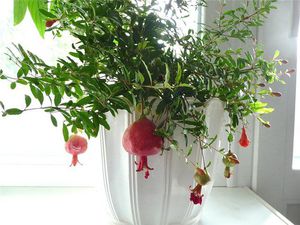 At the market or in the grocery store, you need to buy a large, beautiful fruit. There should be no dents, rot, mold on his skin.
At the market or in the grocery store, you need to buy a large, beautiful fruit. There should be no dents, rot, mold on his skin.- At home, you need to break it, and leave a few seeds for planting. Their germination reaches 95%, so four to five seeds are enough.
- Remove the remaining pulp from the grains by rinsing them under running water. Hard, ivory-colored seeds should remain. Green and soft to the touch seeds are not suitable for planting.
- It is recommended to soak the selected planting material for 12 hours in a solution of "Zircon" or "Epina". For one teaspoon of water, you only need two drops of the solution.
While the seeds are soaking you can prepare the ground... You can use an all-purpose earthy mix available from flower shops. If possible, the soil can be prepared independently from fertile soil, peat and sand.
Pomegranate seeds are planted in containers filled with earth for seedlings to a depth of 1-1.5 cm. Then they are sprinkled with earth, sprayed with warm water and covered with polyethylene. It will turn out to be a kind of greenhouse, in which the seeds will hatch quickly. The temperature for pomegranate germination should be at least 25-30C.
The seeds planted in November or early spring should emerge in a couple of weeks. If they are planted at other times of the year, they can hatch within a few months.
Care of young sprouts
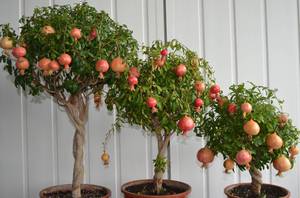 As soon as the first seedlings appear, the container with seedlings must be placed in a bright place. It is also necessary to ensure that the soil does not dry out. It's better to water it by spraying from a spray bottle.
As soon as the first seedlings appear, the container with seedlings must be placed in a bright place. It is also necessary to ensure that the soil does not dry out. It's better to water it by spraying from a spray bottle.
Seedlings with two or three true leaves are transplanted into separate pots.Young plants are planted in the ground, for the preparation of which you need to mix:
- leaf humus - 1 part;
- turf - 2 parts;
- sand - 0.5 parts;
- peat - 0.5 parts.
The pomegranate has a shallow root system, so the tree can grow in small containers. The main thing is good drainage.
Care for young plants consists in abundant and regular watering, which is carried out as the earthen mixture dries. The soil in the pots should always be slightly damp. Excess water must be poured out of the pan.
Plants planted in autumn during the winter season will need provide additional lighting... Otherwise, with a lack of light, the seedlings will elongate or will not grow at all.
Features of growing a pomegranate tree
Taking care of pomegranate grown from a bone is not difficult at all. The plant is unpretentious, but requires compliance with some rules of care:
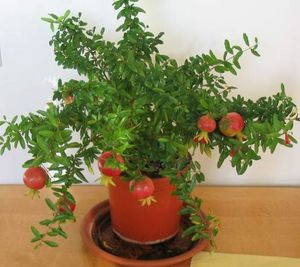 In summer, the optimum temperature for growing a pomegranate tree should be between 18-25C. In winter, it is better to keep the plant in a cool room at a temperature of 12-15C. In the spring, when the last frosts have passed, the bush can be put on the balcony or in the front garden.
In summer, the optimum temperature for growing a pomegranate tree should be between 18-25C. In winter, it is better to keep the plant in a cool room at a temperature of 12-15C. In the spring, when the last frosts have passed, the bush can be put on the balcony or in the front garden.- The pomegranate's earthen lump should not dry out. Therefore, in summer, the tree is watered abundantly and often. In winter, if the plant is kept in cool conditions, watering is reduced. Pomegranate is watered only from above, since it has a superficial root system.
- In order for the pomegranate to bear fruit well, it is recommended to fertilize the plant from spring to autumn. For this you can use universal fertilizers for indoor plants. Top dressing is carried out every two weeks. But you should know that there is a large amount of nitrates in purchased fertilizers. Therefore, if you are going to eat pomegranate fruits, it is undesirable to feed it with such fertilizers.
- When a plant enters a dormant period, it begins to shed its leaves. This is a natural process and there is no need to be afraid. To prevent the pomegranate from shedding its leaves, some growers keep it in a warm room in winter. This is not recommended as the plant will wear out and slow down growth.
- The buds of the seed-grown pomegranate begin to bloom in February. At this time, you need to put it in a lighter place, and water it more often. Weak and dry shoots should be pruned. Soon the bush will be covered with new foliage.
- It is recommended to replant young plants every year. The pot should be about 2 cm in diameter larger than the previous one. Trees that are more than three years old are replanted only when its roots fill the entire earthen ball. However, it should be borne in mind that the pomegranate loves a little tight pots, in which it grows well and blooms profusely.
Crown formation
To make a beautiful and fluffy bush from a young plant, a pomegranate annually you need to do a haircut.
Pruning should be done before the plant begins to actively grow, that is, in February. With aging, one of the tree trunks is replaced by a young strong shoot. Therefore, a haircut stimulates branching. Pruning young shoots should be done on the outward looking bud. As a result, two to five pairs of leaves should remain on the branch. The shoots remaining from pruning can be put on cuttings.
The crown of the tree can be made in the shape that you like best. The bush can be formed into a ball, or made from it an oval tree.
If you want to try yourself in the art of bonsai, then the pomegranate is perfect for this. The desired shape can be given to the bush by repeatedly pinching and pruning, bending old branches to the ground, and bending young branches with the help of wire. You can form a garnet in almost any style.
While cutting don't be afraid to cut off excess... In spring, the tree will gain strength, and new branches and leaves will grow back quickly. Do not forget to regularly remove dried flowers and leaves from the bush.
Pomegranate pests and diseases
When growing a pomegranate, it is recommended from time to time to examine it for the appearance of pests or diseases. Most often, the plant affects:
 Spider mite. If the leaves began to fall off, and a white cobweb appeared on them, it means that the plant is infected with a spider mite. At the initial stage, the tree can be tried to heal with folk remedies. It is recommended to use an infusion of garlic, onion peel or tobacco. If such funds do not help, then it is worth spraying the bush with chemicals that are sold in specialized stores.
Spider mite. If the leaves began to fall off, and a white cobweb appeared on them, it means that the plant is infected with a spider mite. At the initial stage, the tree can be tried to heal with folk remedies. It is recommended to use an infusion of garlic, onion peel or tobacco. If such funds do not help, then it is worth spraying the bush with chemicals that are sold in specialized stores.- Peduncle and aphids. These pomegranate pests are rare. When they appear, the plant can be washed with "green soap", or sprayed with insecticides.
- Gray rot is manifested by the appearance of a moldy patina on the plant. You can cure a pomegranate by treating the bush with a special preparation for gray rot.
- Cancer of the branches looks like wounds, along the edges of which spongy swellings appear. With such a disease, the shoots first dry out, and then the whole plant. Branch cancer affects frozen or damaged branches. Therefore, diseased parts of the plant must be treated with garden varnish, or completely removed.
The first flowering of a pomegranate tree with good care can be expected already 10-12 months after the appearance of the Sents... A home-grown plant will bloom several times a year, and delight, albeit few, but tasty fruits.
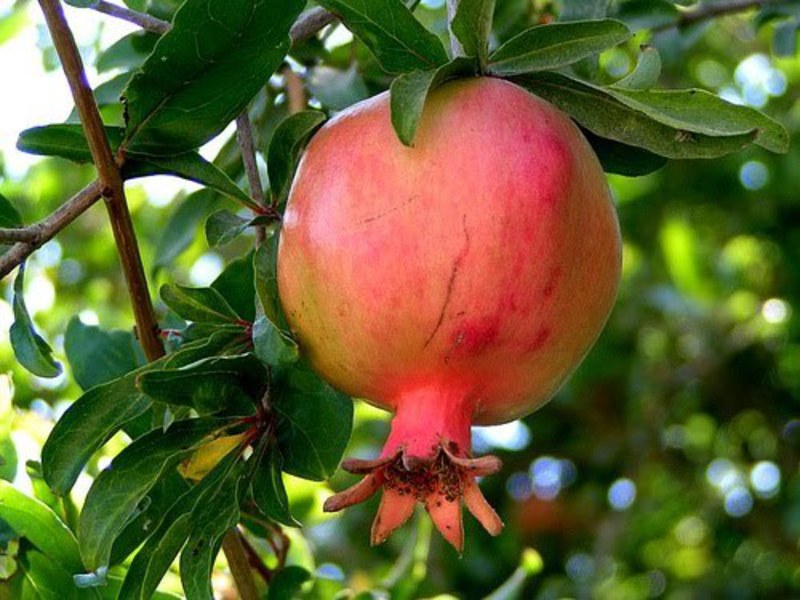
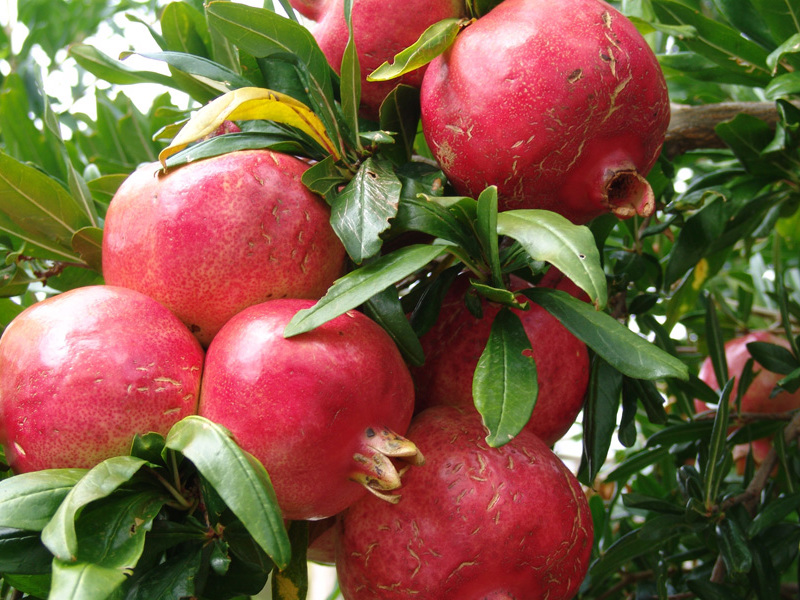

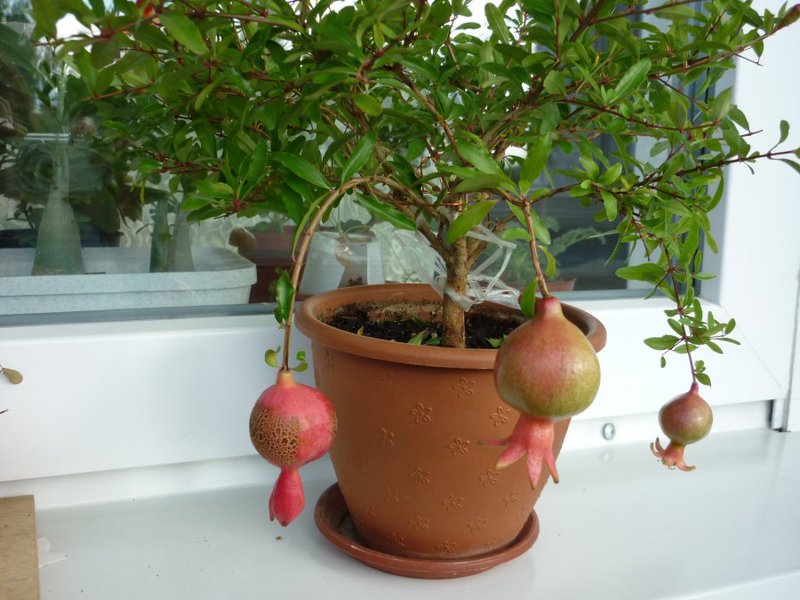
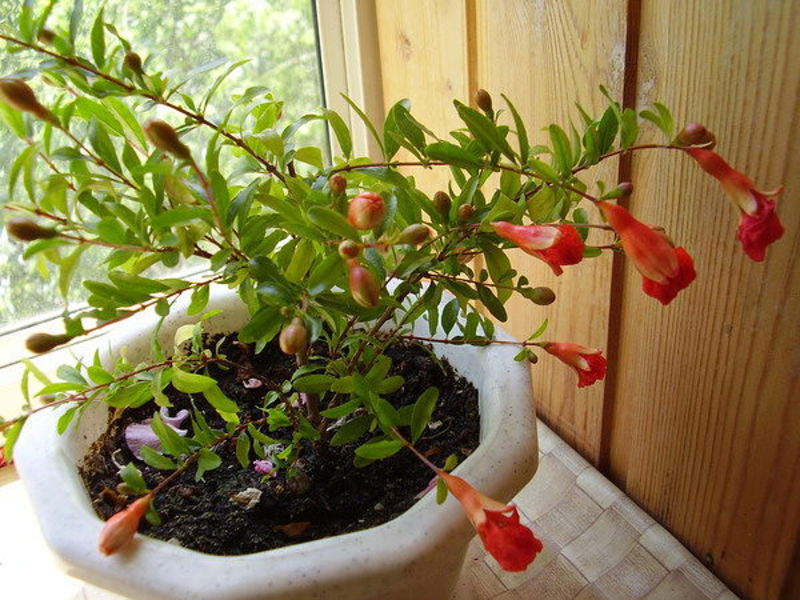
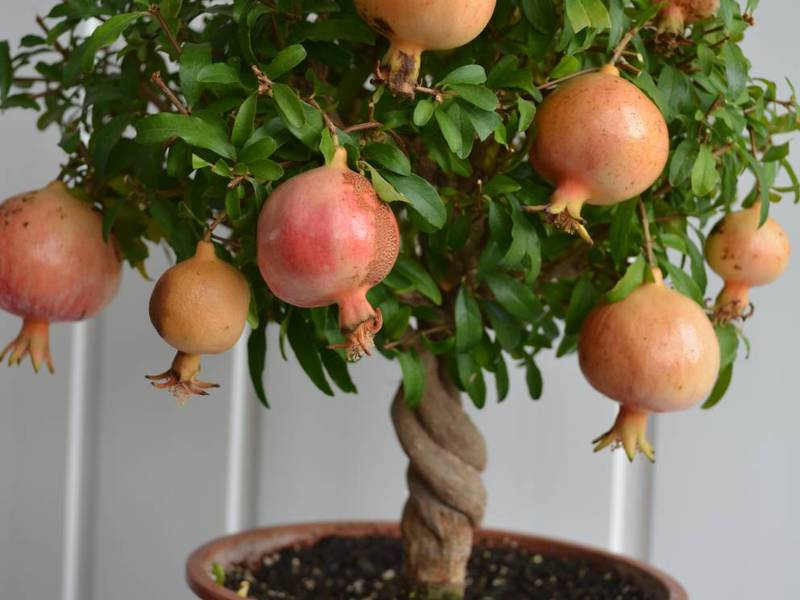
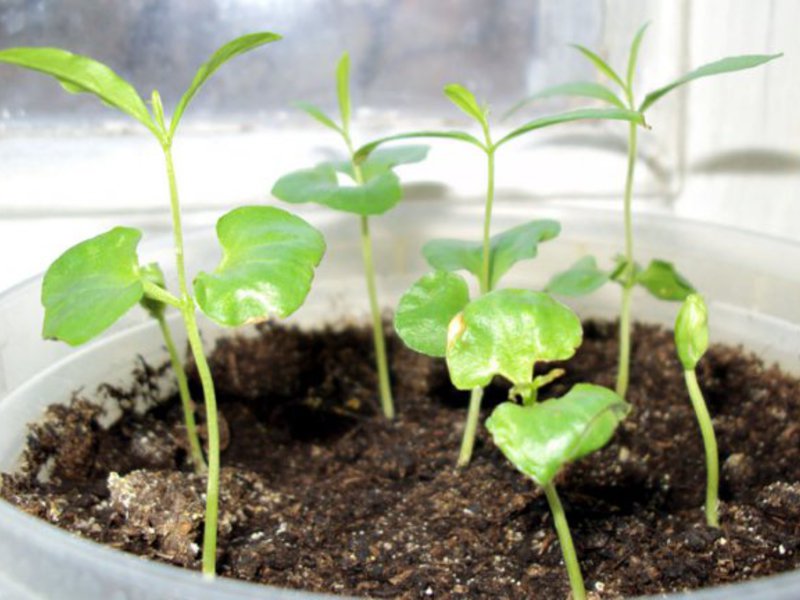
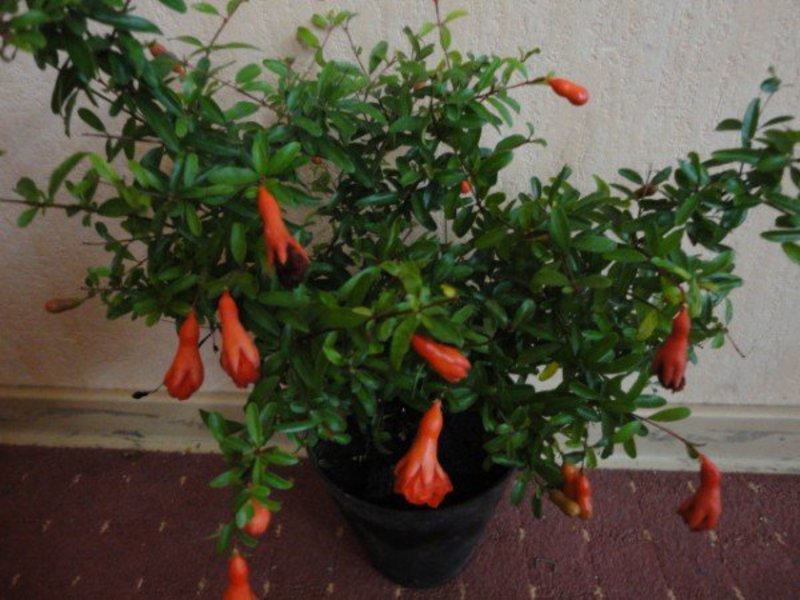
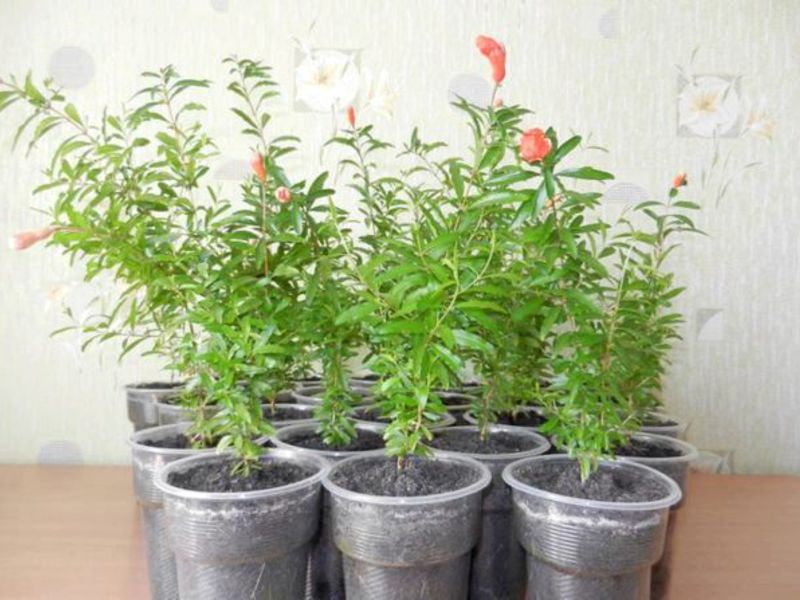
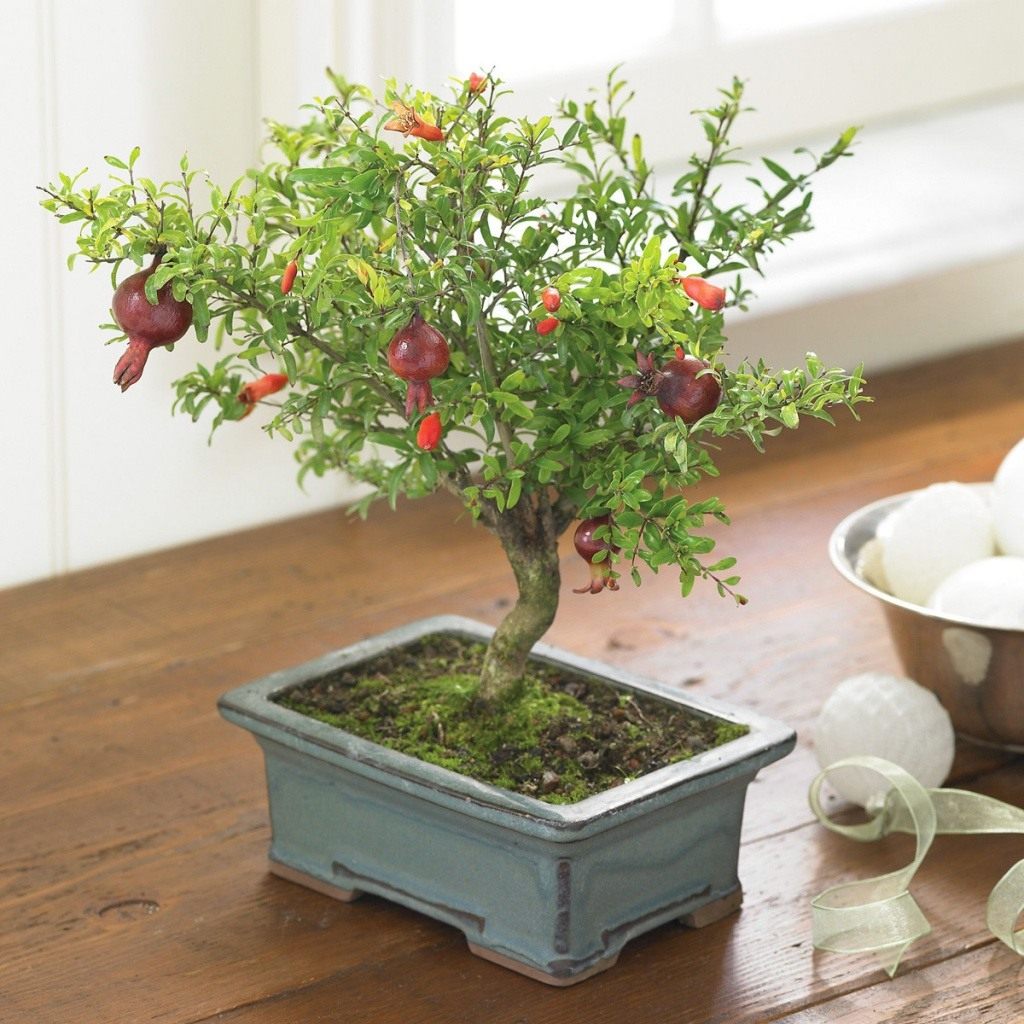

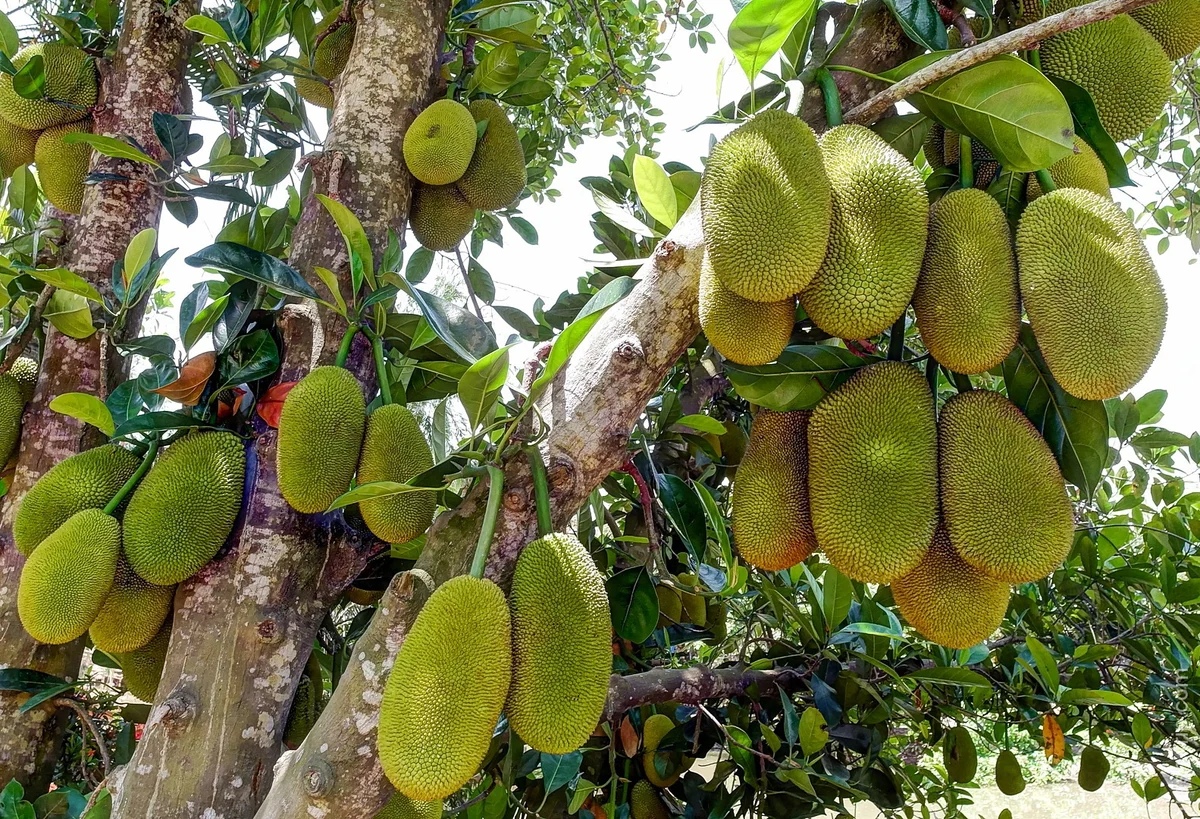
2 comments